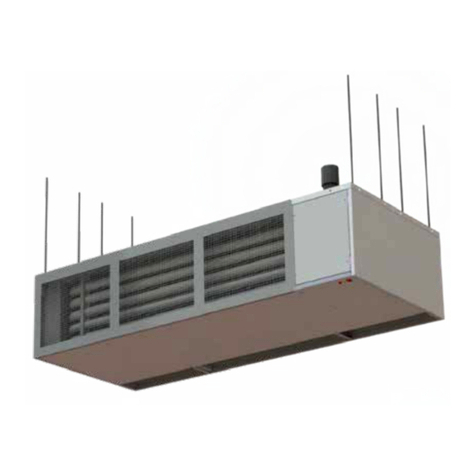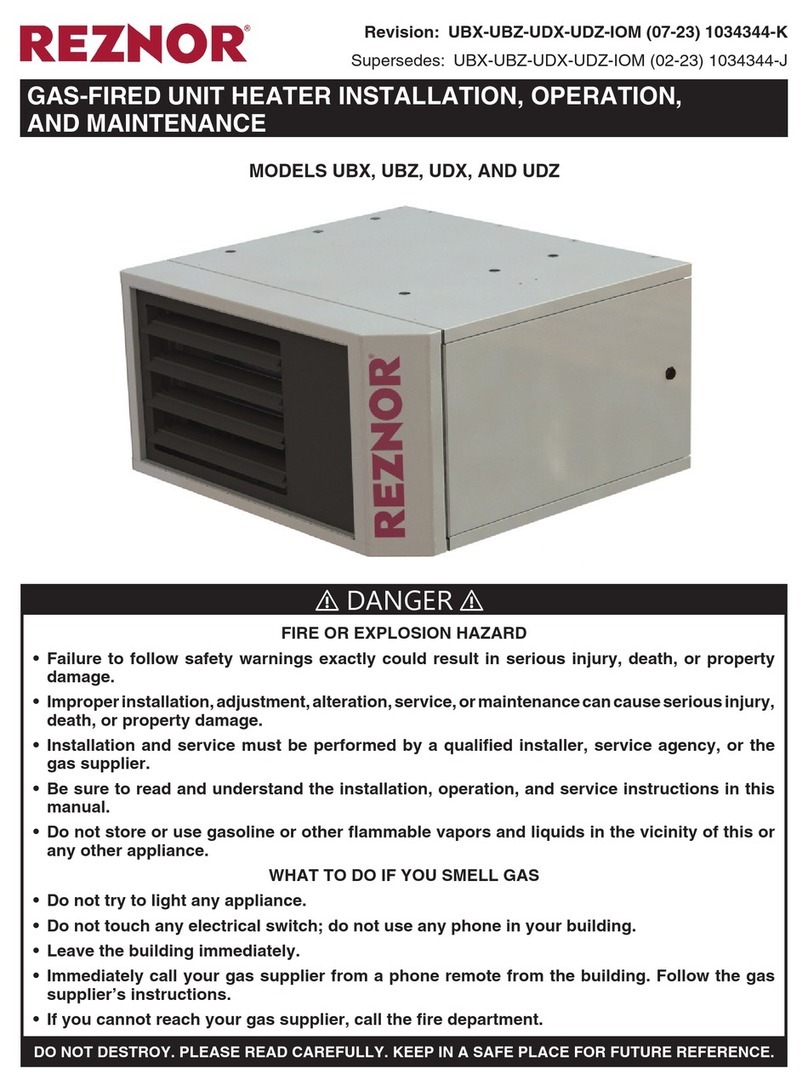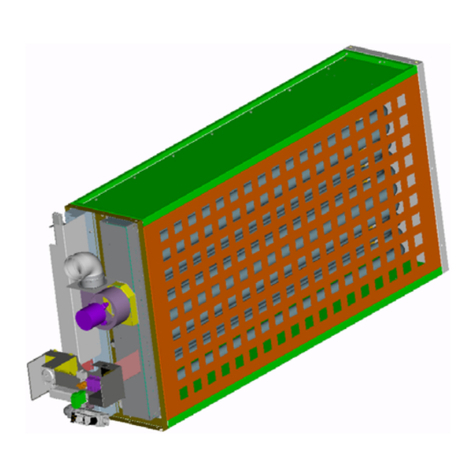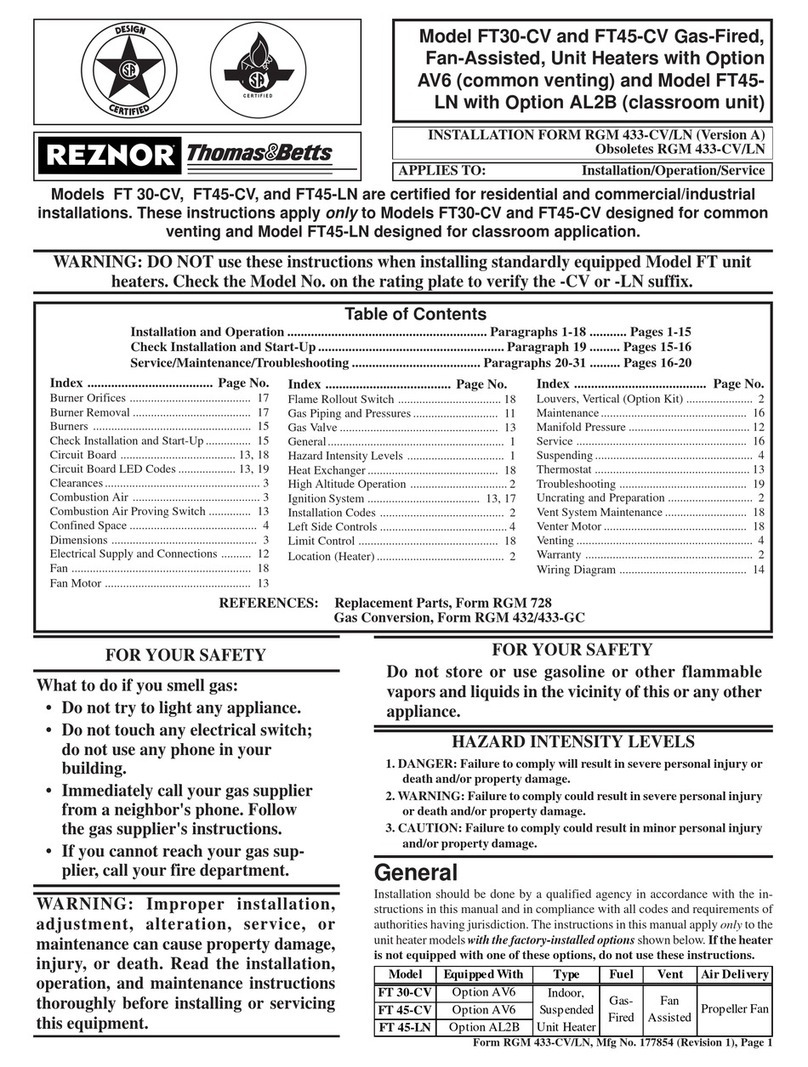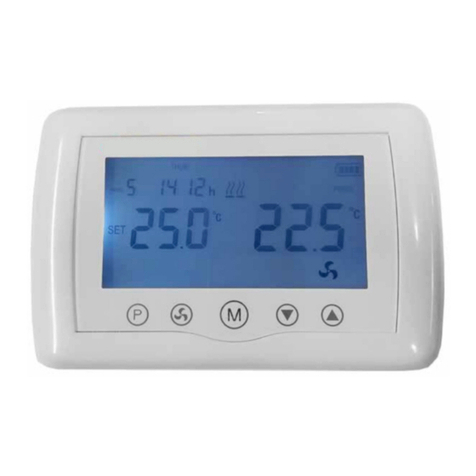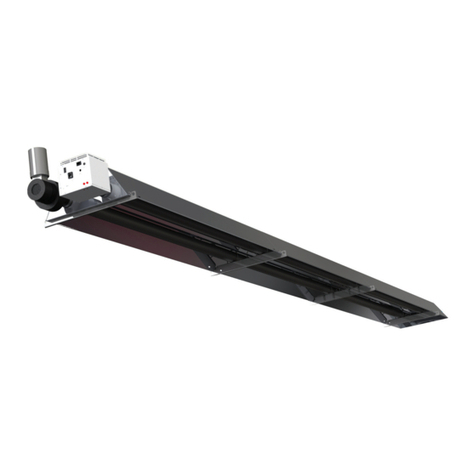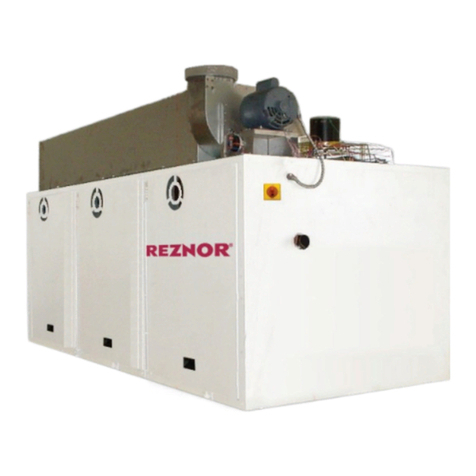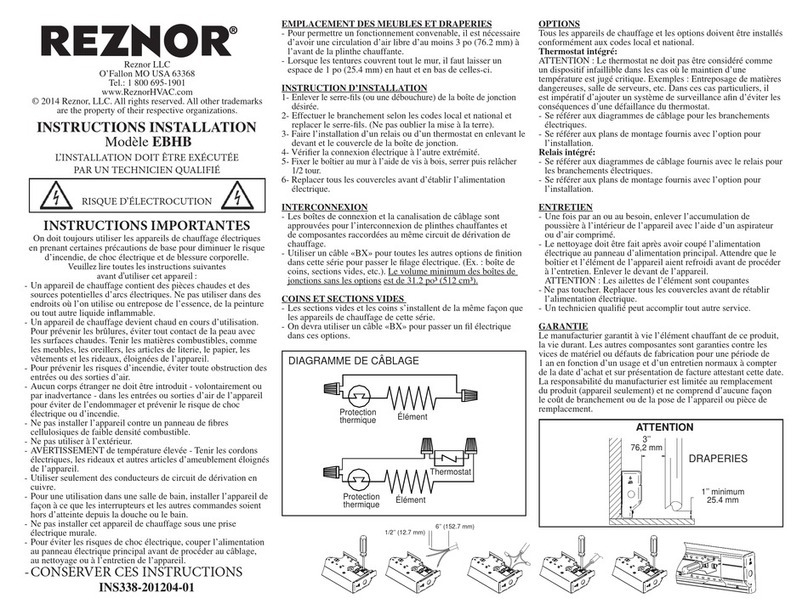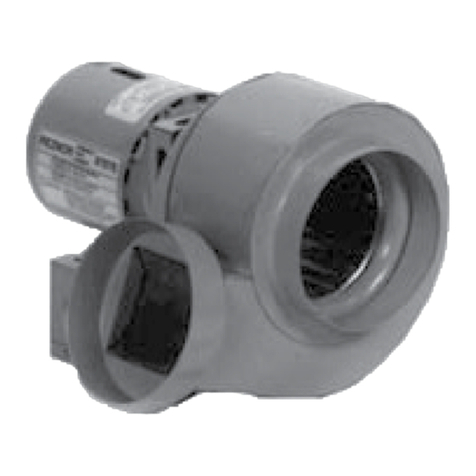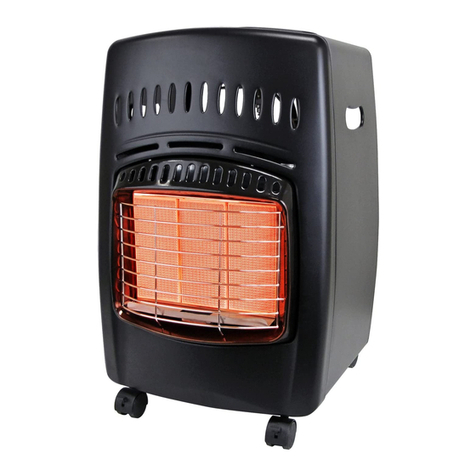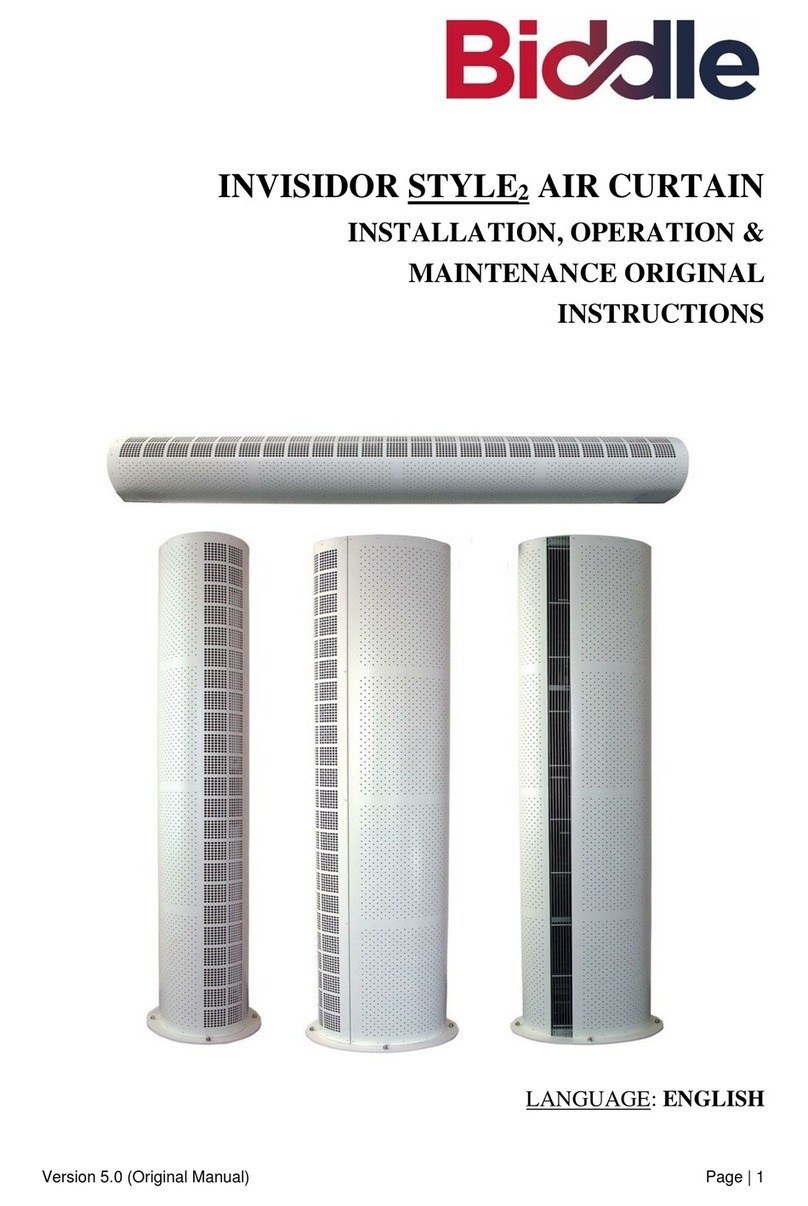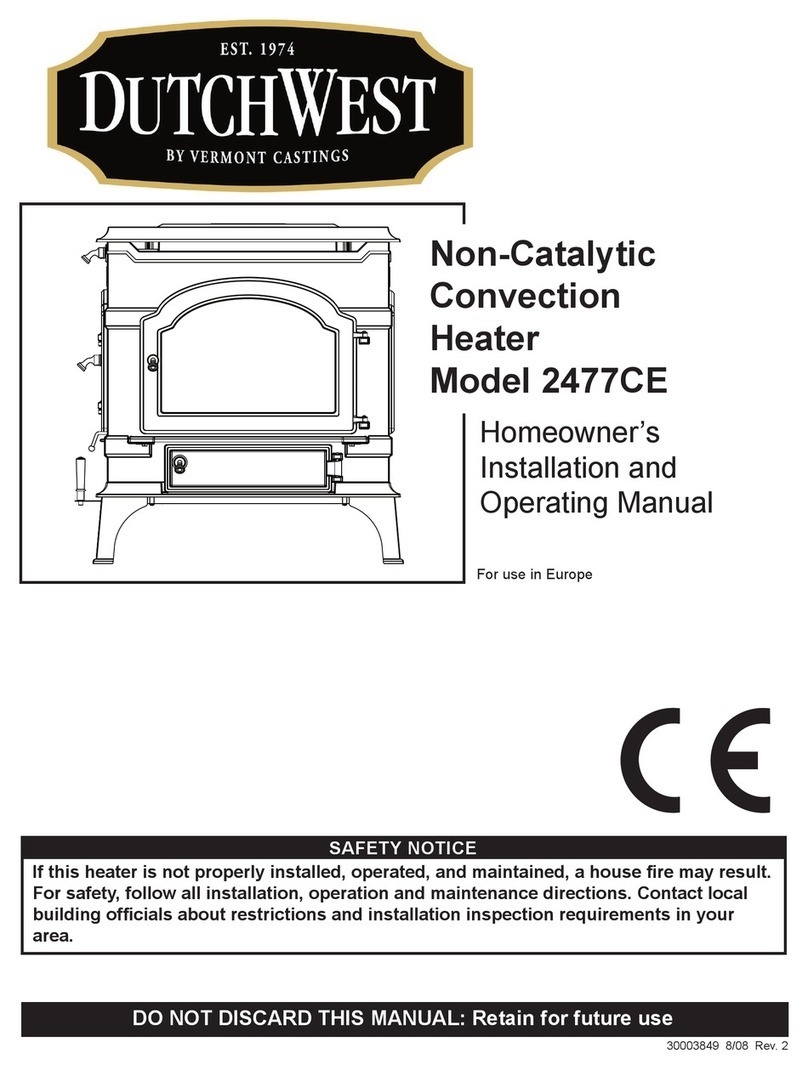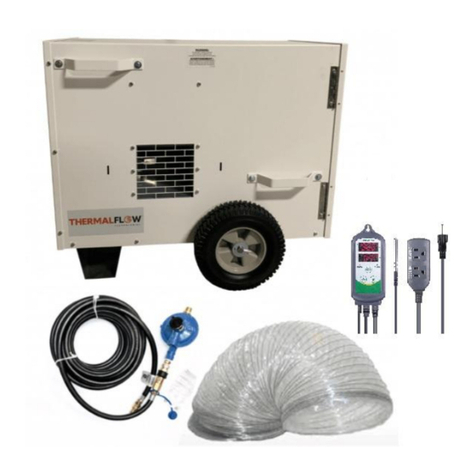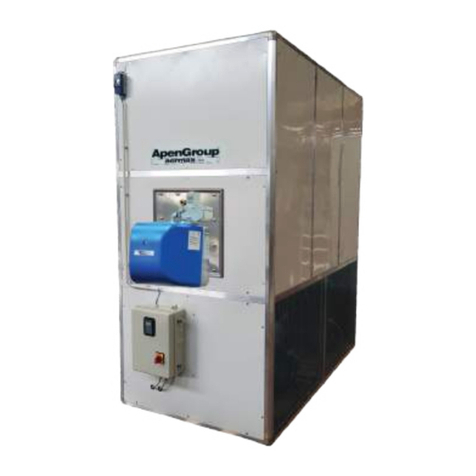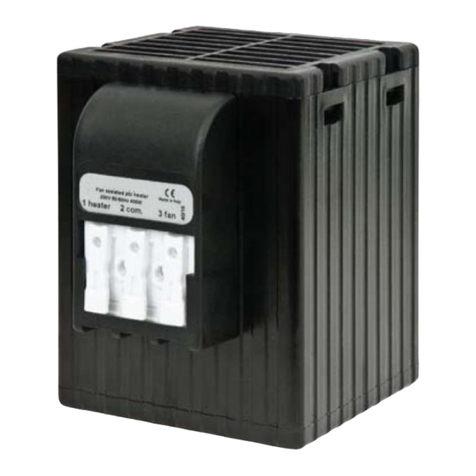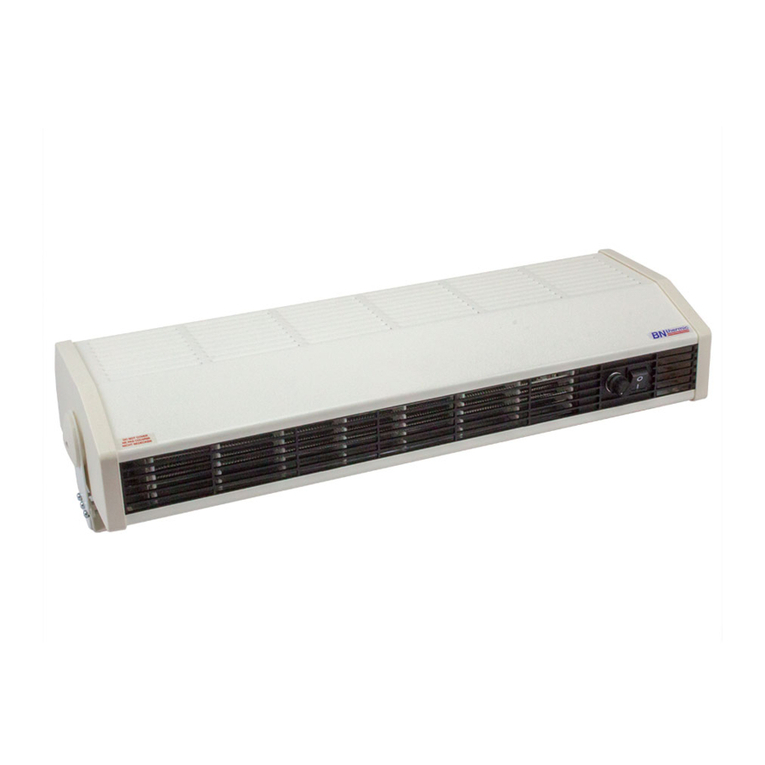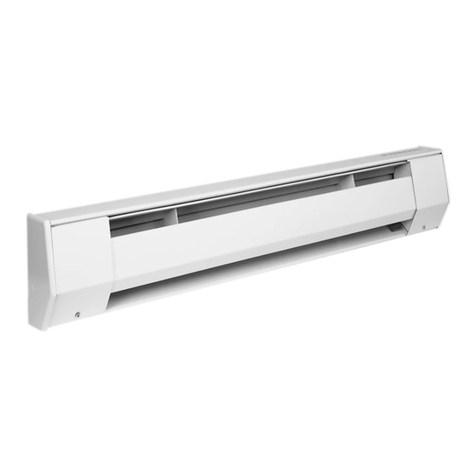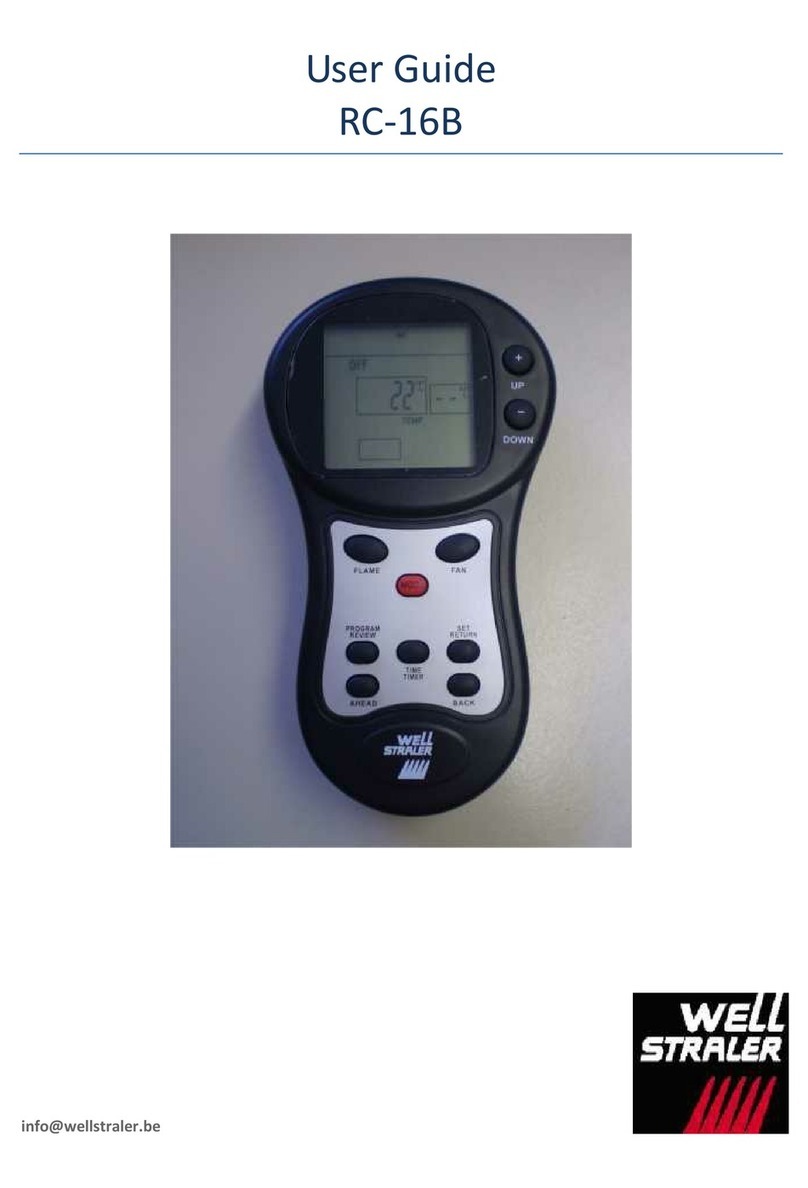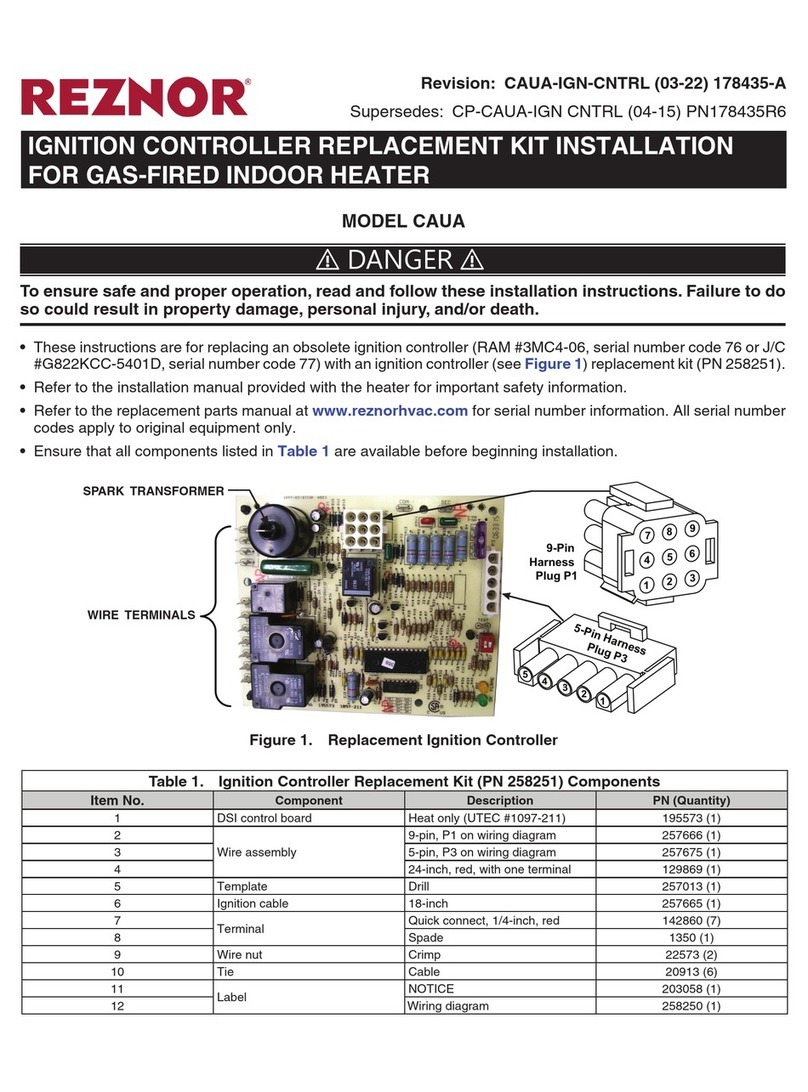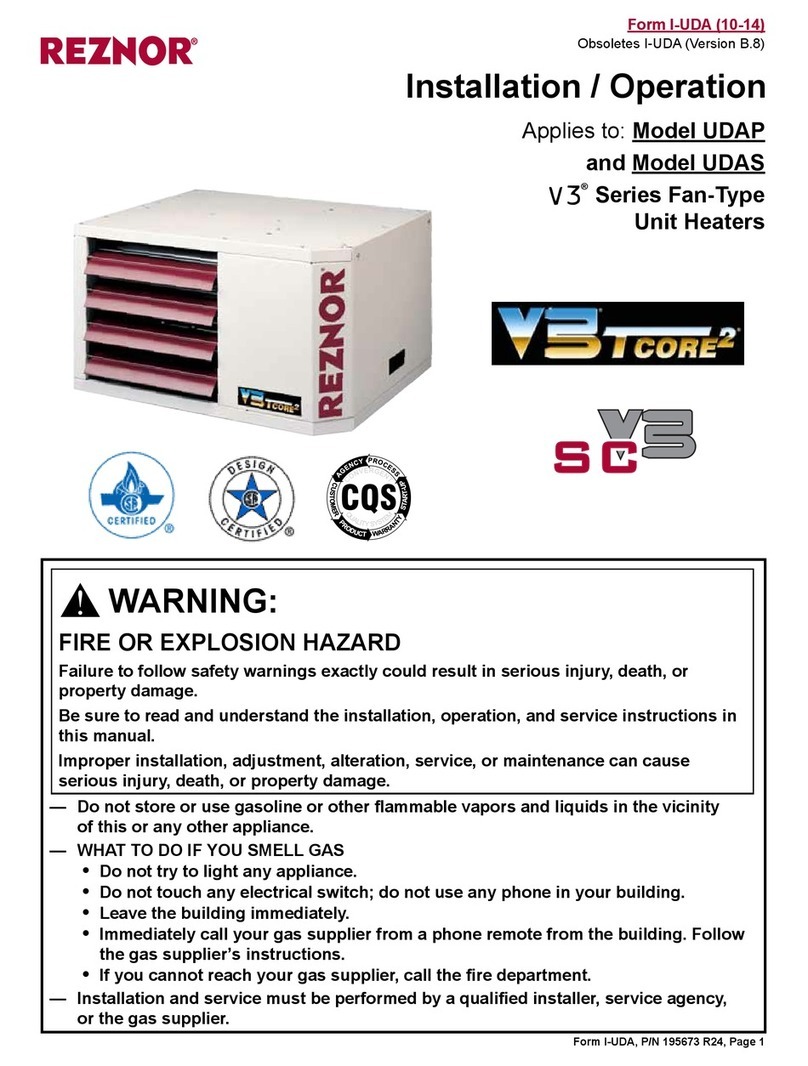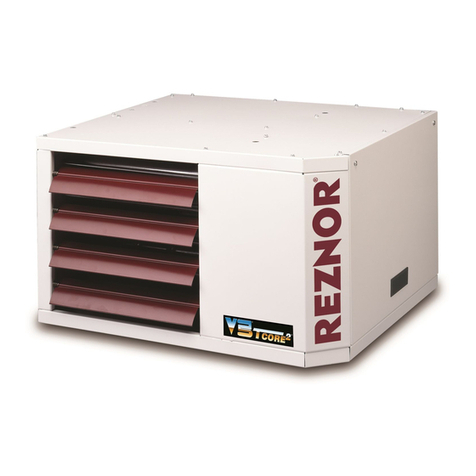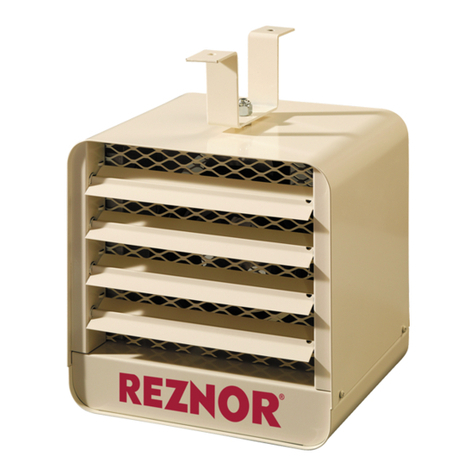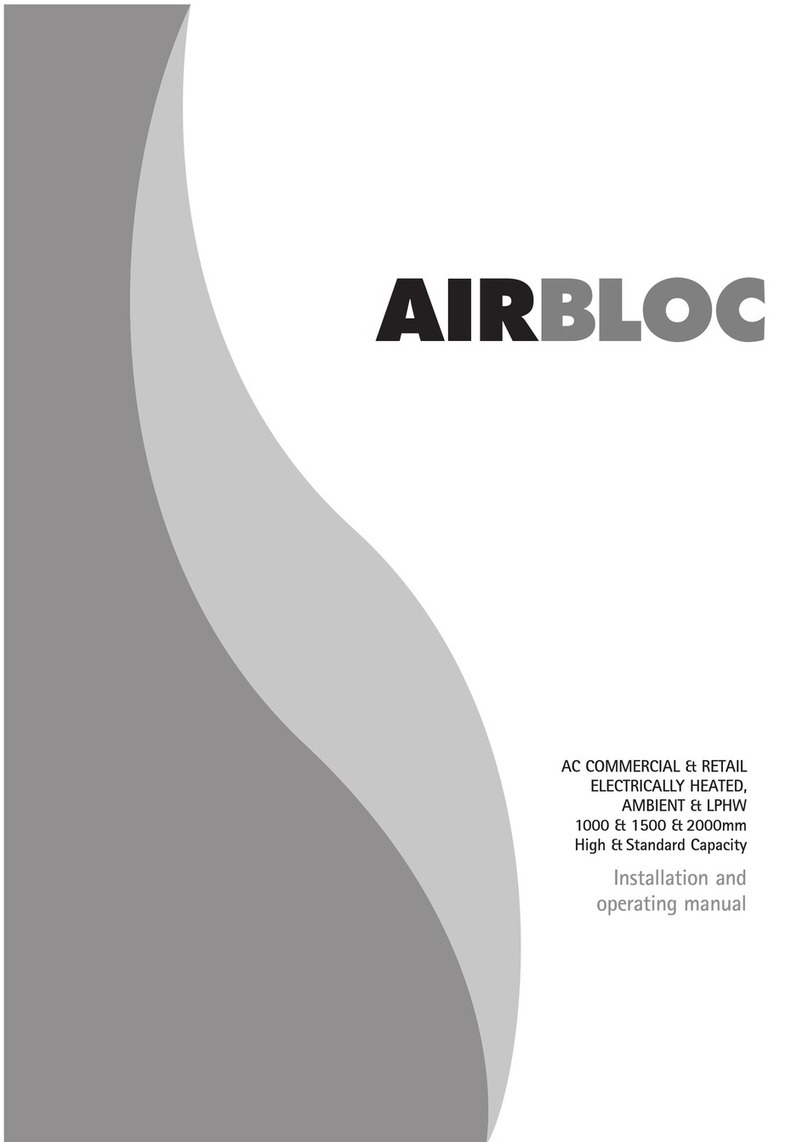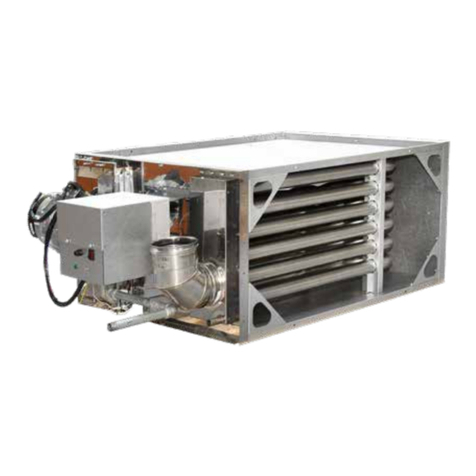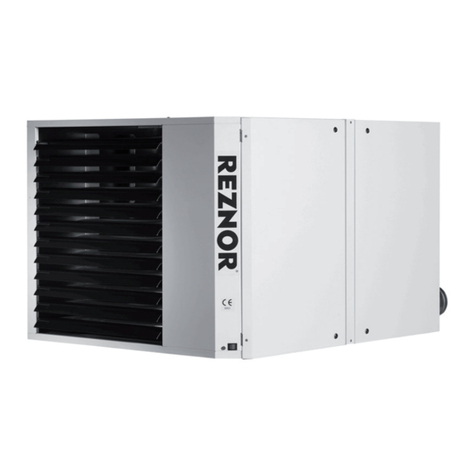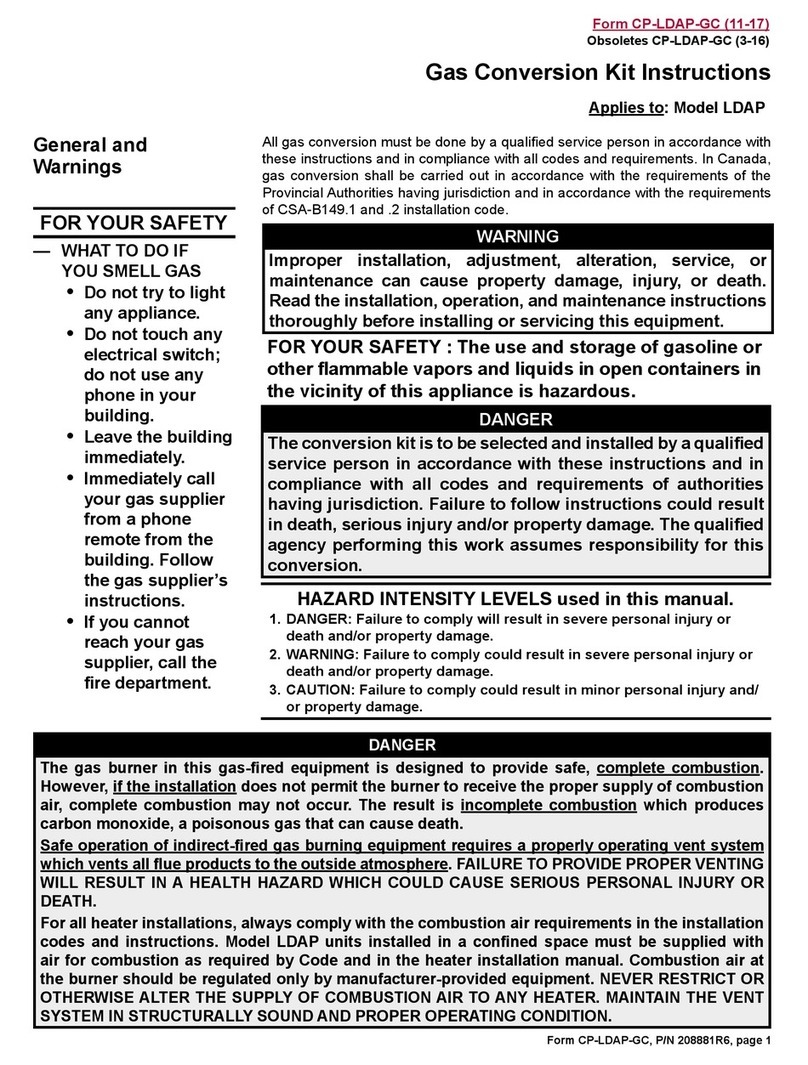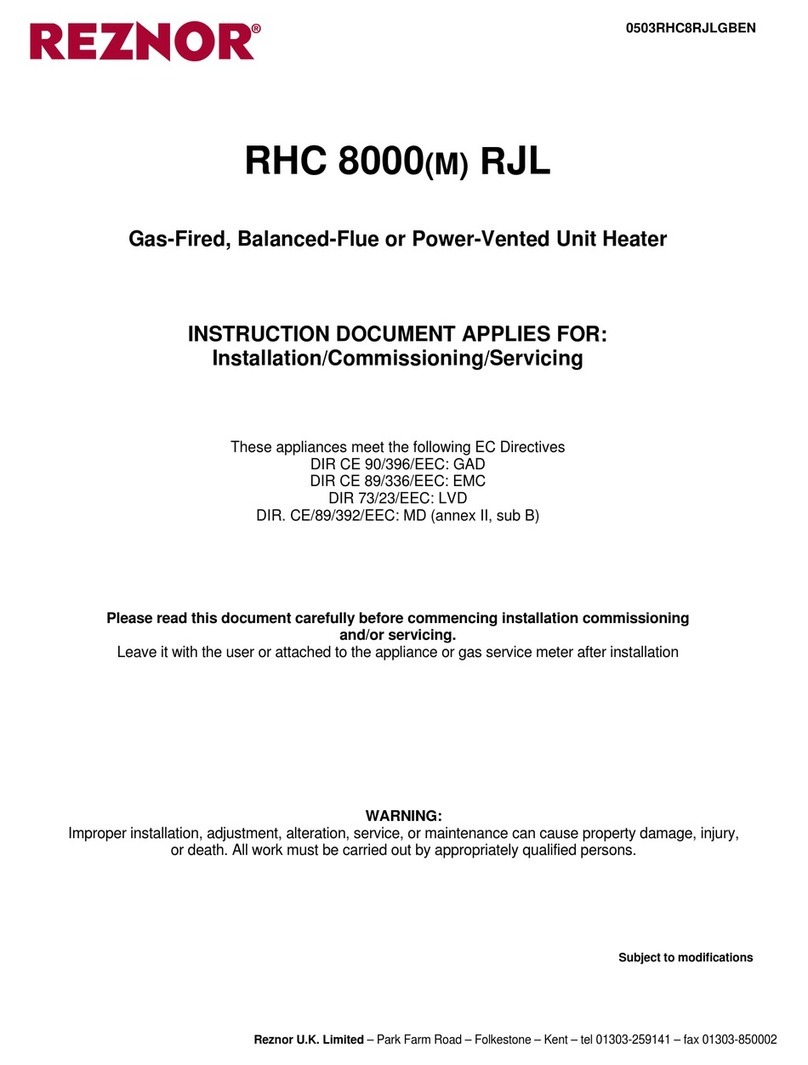
0111ST00AMEN
SECTION 3 INSTALLING
3.1 When installed as an inline duct heater i.e. not fitted
within an air handling appliance cabinet it is necessary
to ensure that clearance is maintained around the
appliance from combustible materials and for service
access. The clearances necessary to ensure safety
for combustibles is 150 mm on all sides. Service
access should be allowed on the controls side of the
appliance equal to the width of the air heater plus 200
mm, this distance allows for the removal of the burner
tray assembly, necessary en servicing the appliance.
3.2 Ensure that the structural elements which will be used
to suspend or support the appliance, are adequate to
carry the weight of the appliance and its ancillary
components i.e. flue system and any connected duct-
work.
3.3 Ensure that the air heater is installed in a level plain.
3.4 If the air heater is to be base mounted in an open
position then it must be secured to supporting devices.
3.5 4 suspension brackets with holes φ10.5 mm are
available as optional accessories to allow the use of
10 mm φrods for suspending the heater.
3.6 If the appliance is to be suspended or base mounted
from cantilever brackets, specially designed wall
brackets should be manufactured to suit the
application respecting the clearances indicated in 3.1
above and the live load factors the appliance will
impose.
3.7 After suspension, the air heater should be rigid so as
to avoid placing a strain on the flue system, gas
services electrical wiring and duct-work.
3.8 ST Series 2 air heaters, whether or not they are
installed within an air handling appliance may be
installed in multiple form as illustrated in figure 4. In all
instances the air flow passed through the appliance/s
should not exceed the volumes required to ensure that
dew point conditions within the combustion circuits/s
as indicated in figure 3 do not occur.
By-passes should be constructed as necessary to
ensure that the optimum temperature rises are met
taking into account the pressure resistance of the air
heater as indicated in figure 2.
When designing by-pass ducts ensure that the
requirements for service access, flue and controls
connections are maintained. An adjustable damper
should be included within by-pass ducts to enable air
flow pressure and volume to be adjusted after
installation.
When fitting ST air heaters in a side by side
configuration it is necessary to specify this
requirement when ordering. Whilst the air may be
passed through the appliance from either end,
provision for locating the thermal over-heat (limit)
control device has to be made so that the air off side
(the hottest side) is monitored for this purpose.
3.9 Figure 5. illustrates the recommended principle that
should be used for the connection of ducting or air
handling appliance element transitions.
A positive seal must be maintained between the
air circuit and the air heater, this is particularly
important when the air heater is installed within
an air handling cabinet. A neutral pressure zone
around the appliance must be maintained to
ensure that the atmospheric burner operates at all
times at normal ambient pressure.
3.10 Figure 6 illustrates some of the situations to be
avoided when connecting an air handler to the
appliance. A rule of connecting a straight length of
ducting equal to 3 times an equivalent duct diameter
onto the appliance should be maintained whenever
possible. It is essential that an even air flow is
distributed across the heat exchanger to ensure that
the heat is scrubbed from all the exchanger elements
thus preventing hot spots which will greatly reduce the
working life of the air heater.
Always avoid installing a centrifugal fan so that the
swirl effect created by the direction of rotation is
counter directive. As well as the effect of uneven air
flows, excessive loss of static pressure is created
resulting in inefficiency of the fan.
Where it is necessary to connect a transition section
as part of the connection then the degree of taper in
any plain should not be greater than 15°. Abrupt
transitions create excessive pressure drops and lead
to uneven air distribution across the air heater.
